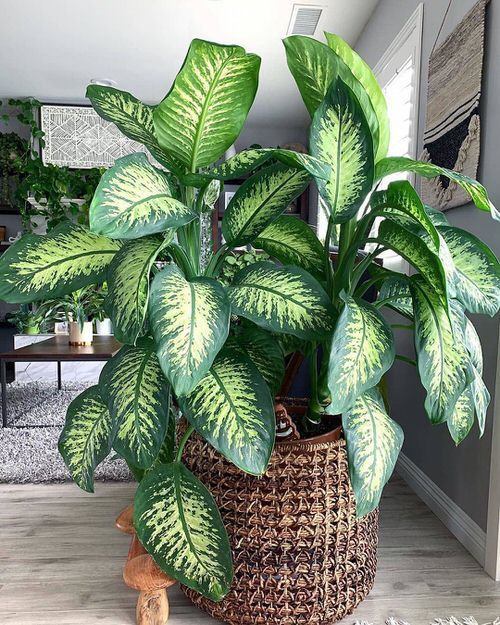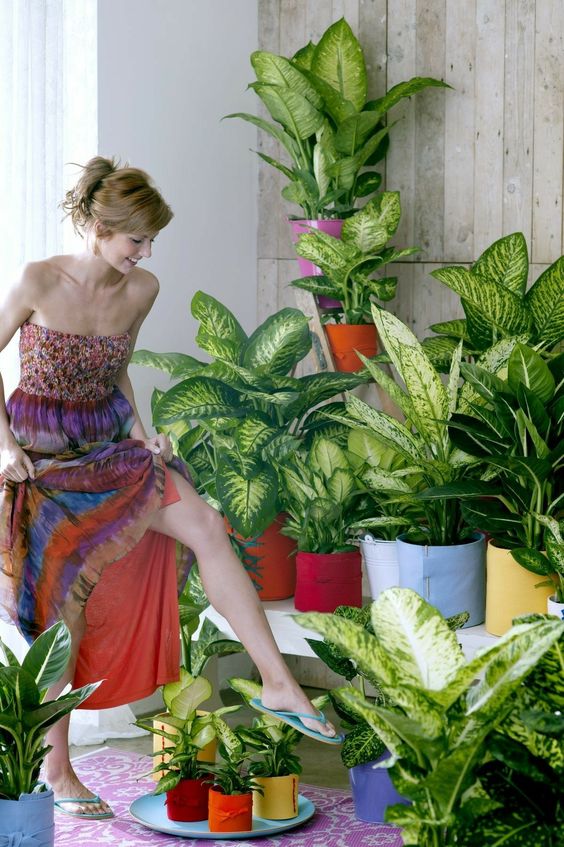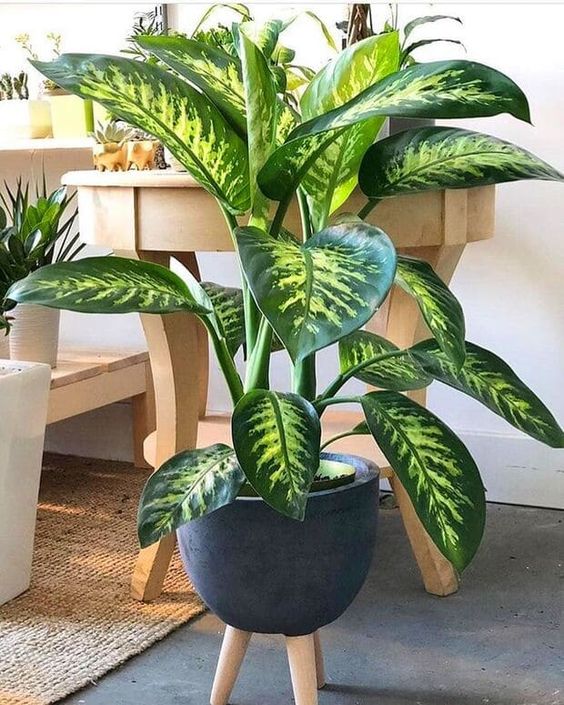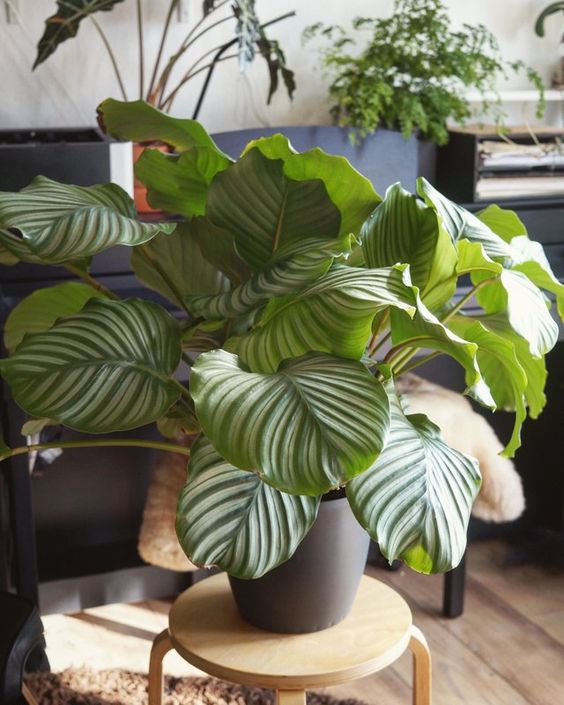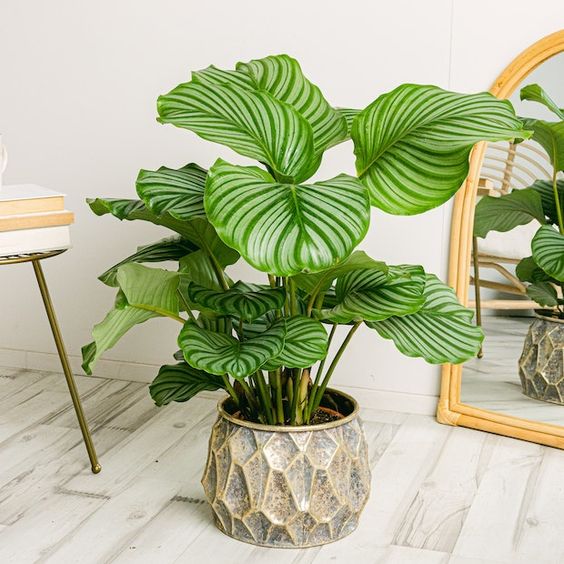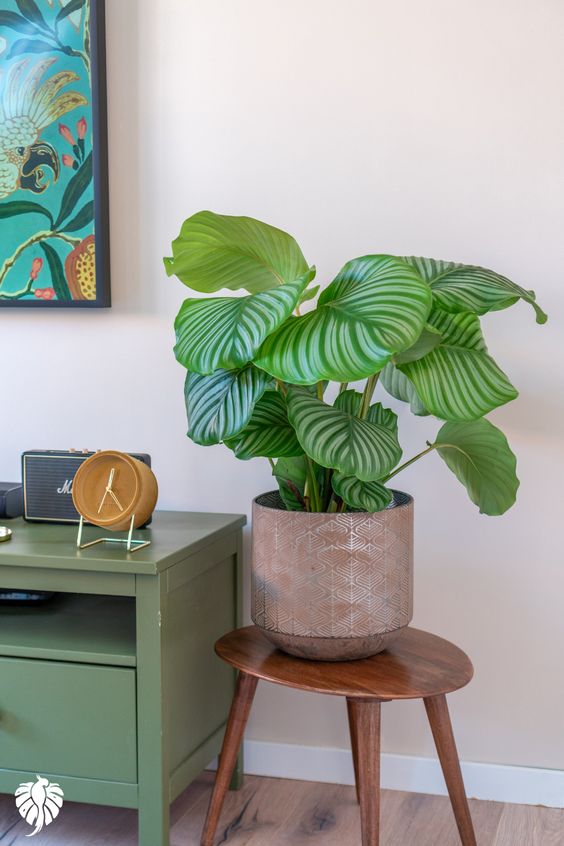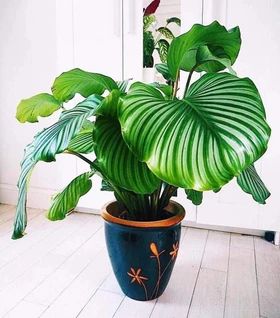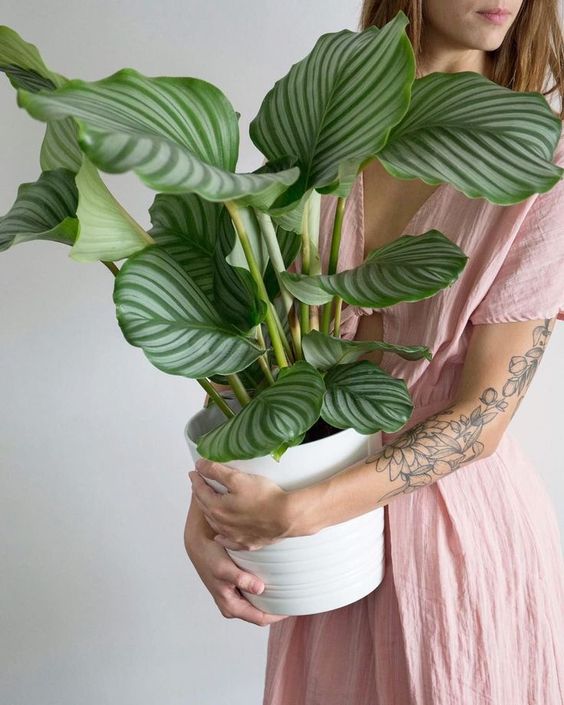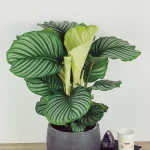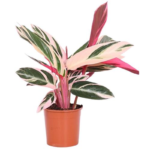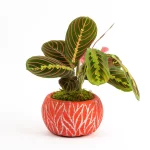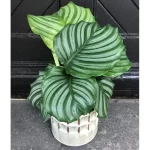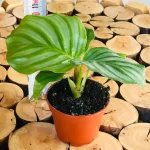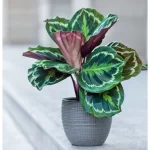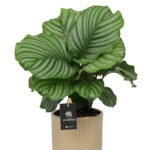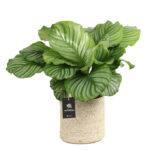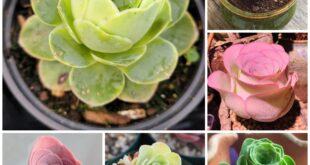The genus Calathea – characterized by boldly marked, elongated leaves in a dazzling variety of colors – includes some of the most beautiful tropical plants in the world. Because of the plants’ striking stripes and veins, they are often known by nicknames such as zebra plant, peacock plant, or rattlesnake plant. Calatheas are also called prayer plants, a common name that other species also use.
Calatheas are found outdoors in tropical environments and cannot tolerate cold temperatures. Elsewhere, they are therefore usually grown indoors as houseplants all year round. Additionally, calatheas can be difficult to care for as they have a reputation for being somewhat picky about their growing conditions. However, when these conditions are met, they grow fairly quickly, often reaching full-grown size within a year. It is best to plant them in spring.
Calathea care
Calathea care can be difficult only because the plants require certain conditions and are not particularly negligible. But they thrive outdoors in their native tropical climate. And they thrive indoors too, if you can replicate that climate.
Calatheas have a reputation for being greenhouse plants, and it’s easy to see why. They are very sensitive to cool temperatures and thrive best when kept in the warm, humid environment that greenhouses often provide. But it’s also possible to replicate this at home. The good news is that they don’t take up much space and only grow to around 60cm high and wide on average, so they can fit into many different homes and gardens.
Light
While it may seem counterintuitive for a tropical plant, calatheas prefer filtered light or shade. They are used to growing under a canopy of trees on the jungle floor and have therefore adapted to short periods of sunlight rather than constant bright rays. Therefore, keep your Calathea out of direct sunlight as too much light can burn the leaves and fade their vibrant patterns.
If you are growing them indoors, indirect sun from an east, south, or west facing window should be sufficient. It is helpful to rotate the plant so that the sun hits it evenly. You may notice that your calathea’s leaves move throughout the day, folding up at night and opening wider in the morning. This allows the plant to maximize its ability to absorb sunlight.
Floor
Calatheas prefer loamy or humus-rich soil that is rich in organic matter. A slightly acidic to neutral soil pH is best.
A peaty, light and airy potting mix works well for potted plants, as does any special mix for African violets.
Water
Water regularly to keep the soil evenly moist (but not waterlogged). Calatheas like lots of water, but don’t want to be waterlogged.
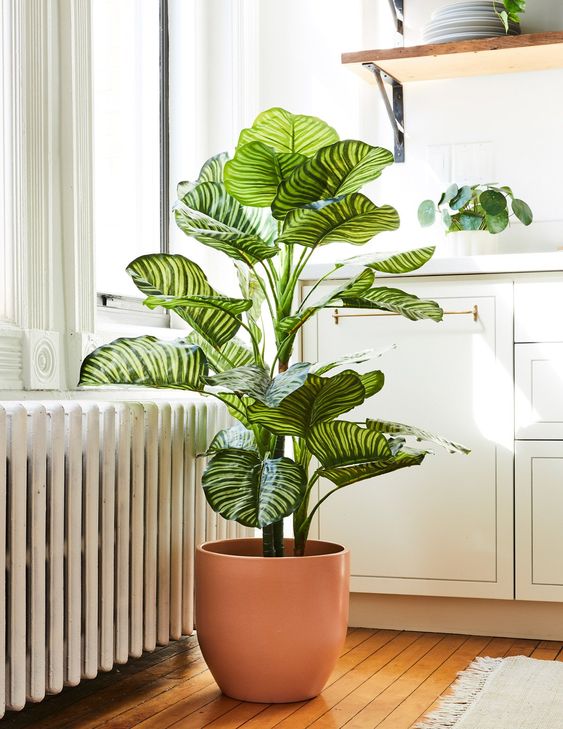
Temperature and humidity
Calathea plants thrive in temperatures between 70 and 85 degrees Fahrenheit. They can tolerate a drop in temperature up to 60 degrees Fahrenheit, but not lower.
Calathea plants also prefer humidity of 50% or more. Indoors, you can increase the humidity around your plant by placing a humidifier nearby. You can also place the plant container on a tray filled with water and pebbles, making sure the bottom of the container does not touch the water. Additionally, terrariums can be a great way to create humid conditions. You would just have to find one large enough to accommodate the sprawling leaves of a calathea.
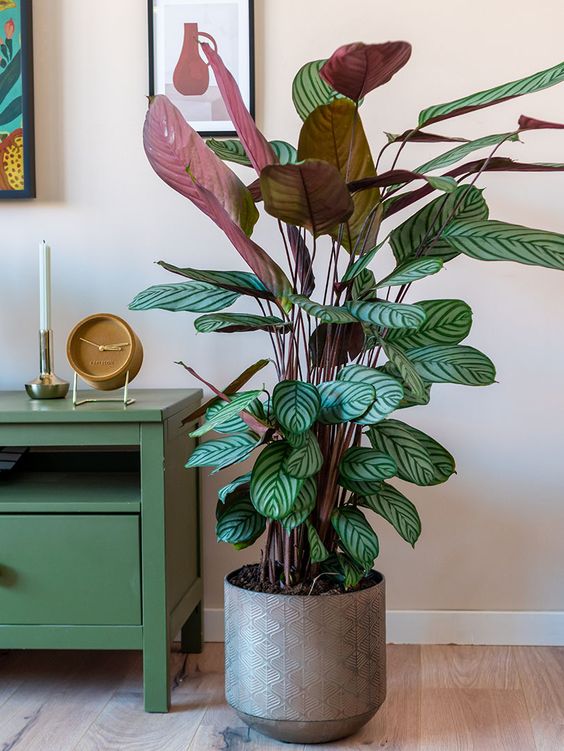
fertilizer
To maintain a lush, full plant, treat your calathea with a half-strength liquid, balanced fertilizer once a month during spring, summer, and fall, following label directions. Hold off on fertilizing in the winter months, when the plant naturally grows less.
 TopsDecor.com Home Decor Ideas
TopsDecor.com Home Decor Ideas
